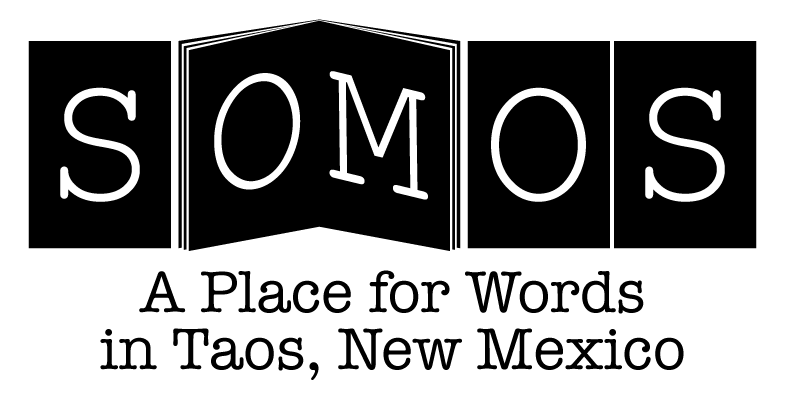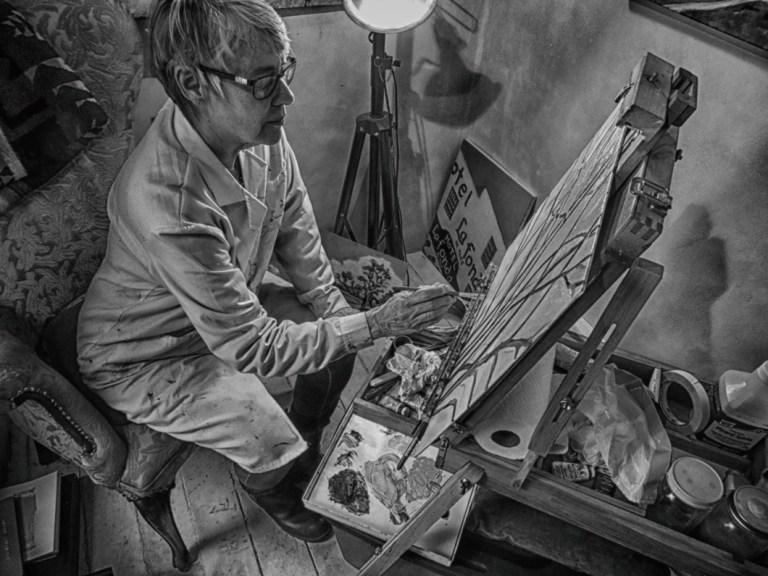Musician, artist, writer and editor Melody Romancito has lived in Taos since 1986. In 2011, her interest in the paranormal led her to launch a new venture as a walking tour guide. Leading people down the streets and alleyways around Taos Plaza, Romancito retells the stories and legends of the ghosts of Taos. Her book, Ghosts and Haunted Places of Taos, documents some of these spine-tingling tales. It is available on Lulu.com and at the SOMOS Bookshop. While Romancito’s tours have been placed on hold during the pandemic, she has recently started a podcast that illuminates the shades of our town. Visit ghostsoftaos.wordpress.com and click on “Ghost Blog” to listen in.
Melody Romancito recently took some time to answer a few questions about her ghostly interests. Below is an excerpt of the exchange.
How long have you been interested in ghosts and the paranormal? Do you remember what initiated your interest?
Romancito: I have been interested in unexplained phenomena as far back as I can remember. I think most children are interested in ghost stories. Some of us grow out of them and some don’t. I guess I didn’t grow out of them.
What inspired you to write your book, Ghosts and Haunted Places of Taos?
Romancito: The tours inspired the book. I knew some people would either want a souvenir or, if they were unable to take the tour, would like to know or collect something about Paranormal Taos. I tried to write it as if Edgar Allen Poe had been hired to write copy for the Paranormal Chamber of Commerce for Taos.
Some of the topics on your new podcast series are ghost stories from the Taos Inn, Electronic Voice Phenomena (EVP) recorded at the Mabel Dodge Luhan House, and stories of Arthur Manby and La Llorona. How do you choose your topics for the podcasts?
Romancito: I have mapped out the first 12-episode season and I’m preparing the script for the eighth episode about the Taos Tunnels. I have to admit, doing my research I got a little creeped out. The tunnels were dug to escape Comanches who had vowed to terrorize all the Spanish settlements in the area. They were experts at torture. Just trying to write the handful of paragraphs about some of their torture techniques has given me the deep heebie-jeebies.
Because I am keeping the time of each podcast around 15 minutes I have much more time to expand on any subject than I do during the tours. There’s so much material to cover, I don’t think I will ever run out of ideas, plus, Taos seems to generate new ghost stories all the time. Each tale gets a new layer of meaning and more details over time.
The episodes in the first season are the first things that came to mind, plus I have lots of material from interviews and investigations I’ve done with Reyes Cisneros of Northern New Mexico Research and Investigation of the Paranormal (NMRIP). I can produce some of the podcasts without having to create much more than some expository intros and transitions. The EVP episode was like that. The sound files already existed, so why not serve it up as a podcast.
Why do you think it’s important to share these stories?
Romancito: Ghost stories are a great way to tell history. They explain the reasons why things are the way they are. If we understand history a little better, we might understand why people feel the way they feel about some things – like cutting off traffic to the plaza, how our irrigation ditches work or hard feelings between this family and that family. Ghost stories might simply be an effective way to impart these things without someone coming away with the feeling they’ve received a lecture.
Do you have any thoughts about what a ghost is, and why they exist?
Romancito: I don’t have any deep certainties about what ghosts are and why humans seem so intent on believing in them. I know most cultures believe in ghosts, while some are more or less predisposed to communicate with them.
With that being said, I like the idea of ghosts or communications with personalities or people of the past. It seems to satisfy a deep need within the human psyche. Maybe it’s about us having a lasting effect over a place and the people who live there. Maybe it’s about hoping our ancestors have our best interests at heart.
We may, however, find the way we understand time and the sensory filters through which we see reality might account for why people report these dispatches from the past. This might explain why other people don’t. I think the last study I read showed 30-50 percent of people in the United States believe in demons, ghosts or apparitions of some kind. The percentage of people who believe in such things has stayed pretty constant over the decades.
It could be that some people have the ability to sense things on a wider spectrum than the rest of us. Besides an expansion of colors, tastes and other senses, these people could enjoy a wider piece of the spectrum of what we understand as time. It could be that ghosts are simply our past and our future bumping into us – intruding into our time-space continuum. Some people are better able to register their presences than others.


Recent Comments